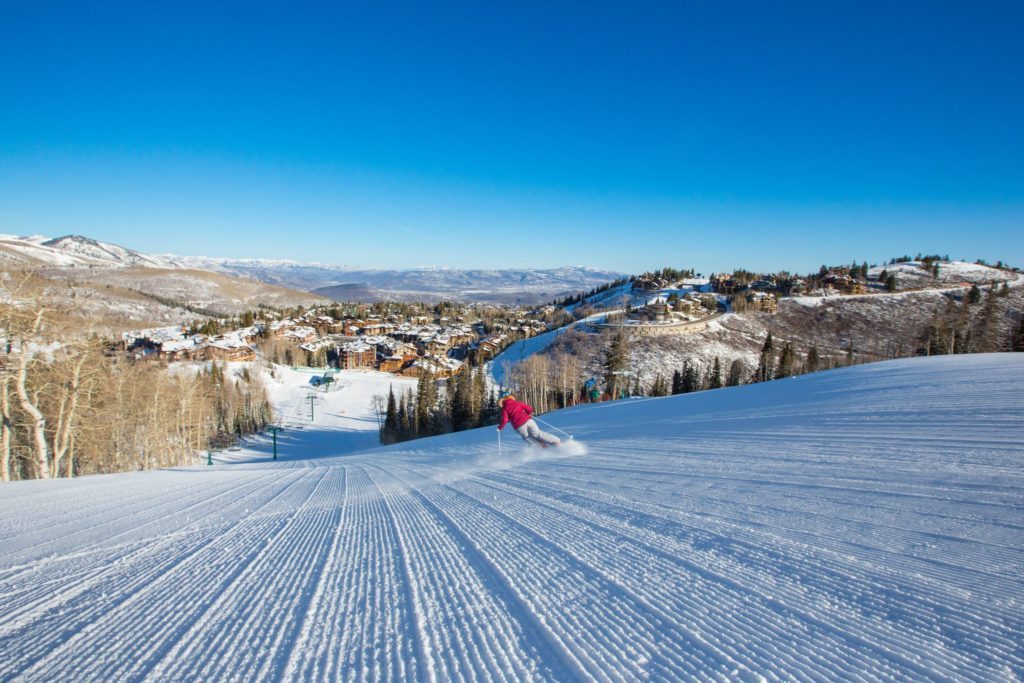Deer Valley’s Invisible Safety Net: Part Two
In our previous blog, we were introduced to the amazing “Doctor Patrol” at Deer Valley. Today, both Doctor Peter Taillac and Ski Patrol’s Hylton Early will dispense some great advice about making your ski stay with us as fun and safe as possible.
JF: What about some physical conditioning prior to going skiing?
Hylton Early: There are many things you can do to prepare yourself for your ski trip. Doing exercises, like some body weight squats, single leg squats, strengthen your leg muscles, and so on. There are many sources: On line tips and videos, books or magazine that list good physical conditioning exercise for skies. If you have a personal trainer, ask for a specific program prior to your ski vacation.
JF: What advice would you give to guests coming to Deer Valley Resort to ski?
Hylton Early: There are a lot of things you can do to prepare for a great day on the slopes. First, make sure to hydrate and make time for a good breakfast that will give you enough fuel for a fun day out. Also, give yourself the time to acclimate to our higher elevation. You don’t want to forget your sun protection that you will re-apply as the day progresses and don’t forget good eye protection. You also want to make sure you have warm clothing and well thought accessories like good gloves and neck gators or face-masks. People more sensitive to cold may also consider getting some hand and foot warming products or devices.
JF: What about helmets?
Doctor Peter Taillac: This by far is my favorite subject and perhaps the most important piece of equipment. For me, it’s a big issue, because in my emergency department, I take care of skiers who crash with helmets and skiers who crash without them. I can tell you that my patients with helmets are always far better off. Even if they hit their head hard and get knocked out, they aren’t as likely to be permanently brain-injured. Those who don’t have helmets, even if they just suffer a small hit to the head can sustain a severe concussion or some internal bleeding that can cause permanent damage. The helmet is the equivalent to wearing a seat-belt in a car; it makes all the difference in the world in your outcome should you be unlucky enough to be in a ski accident.

JF: Sounds like we should never hit the slopes without wearing a helmet!
Doctor Peter Taillac: Absolutely! The only permanent injury that you can sustain while skiing is a head-injury. If you break your tibia, fracture your arm, dislocate your shoulder or get a severe chest or abdominal injury, even with some internal bleeding, these traumas, for the most part, can all be repaired. A head injury however is a totally different story; too often, we don’t have the technology available to make a severe brain injury get better.
JF: What about inserting some periods of rest into a ski vacation?
Hylton Early: It’s always a good idea to take a break and it’s even better to always listen to your body; if you do, it will tell you if your knees are aching or your back is sore. One good thing you can do is go out on the first chair, right around 9 a.m. and ski till 11 a.m. when the conditions are going to be best. That way, instead of putting in a full day, you can take the afternoon to relax. Listening to your body is paramount, especially if you are of a more advanced age or know you have difficulties acclimatizing to higher altitudes.
JF: Doctor, is there anything you’d like to add on getting used to higher elevations?
Doctor Peter Taillac: Well, it’s important to realize that it always takes a couple of days to adapt from sea level to an altitude of 7,000 – 8,000 feet. I would recommend that if visitors want to ski on their first day, they take it very easy, stay on the lower, less challenging slopes, and just ease into skiing that very first day out. As they start feeling more comfortable, they can go a little bit higher on the mountain and try more difficult runs the next days. I personally found that, as Hylton mentioned, getting an early start and taking a nice, long lunch break, perhaps even a little snooze, and then come back out, is a really good way to make for long but not exactly exhausting day.
JF: Do you have any special recommendations for small kids?
Doctor Peter Taillac: Kids often won’t tell you when they’re cold until it hurts, but their small bodies can loose temperature much faster than adults, because they have disproportionately bigger heads and most of the heat is lost through the head. So for kids, having warm clothing, good cover over their head and ears, in addition to their helmet, is always important. Lastly, for everyone and for all kids in particular, it’s always a good idea to dress as if it’s very cold, make sure to layer your clothing so if there’s a need to shed a layer latter on, as the weather warms up, that’s fast and convenient. It’s a lot easier to take a layer off than putting one back on.
In our next blog, we’ll talk about ski equipment and safety on the mountain. So please stay tuned for next installment of “Deer Valley’s invisible safety net!”





 The Official Blog of Deer Valley Resort
The Official Blog of Deer Valley Resort


